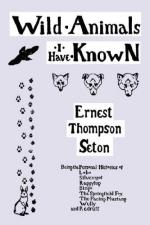|
This section contains 210 words (approx. 1 page at 300 words per page) |

|
Animal stories have delighted readers since antiquity, but the characters featured in them have often behaved like people dressed as animals. Aesop's fables, for example, were written to teach humans about morality, and the medieval "Beast Epic" satirized the society of the day. In Seton's stories, animal characters are allowed to be themselves. Seton believes animals lead lives as interesting as those led by most humans, and he carefully selects details to highlight the interesting features of his subjects' lives. For the most part, too, he avoids the cuteness that characterizes many animal tales, although he does use expressions such as "thimblefuls of down" and "sweet little 'peep, peep'" to describe baby animals. Seton conveys his love for all natural things in Wild Animals I Have Known, despite the fact that he sometimes casts animals in the role of villain for dramatic effect. The horned owl...
|
This section contains 210 words (approx. 1 page at 300 words per page) |

|




